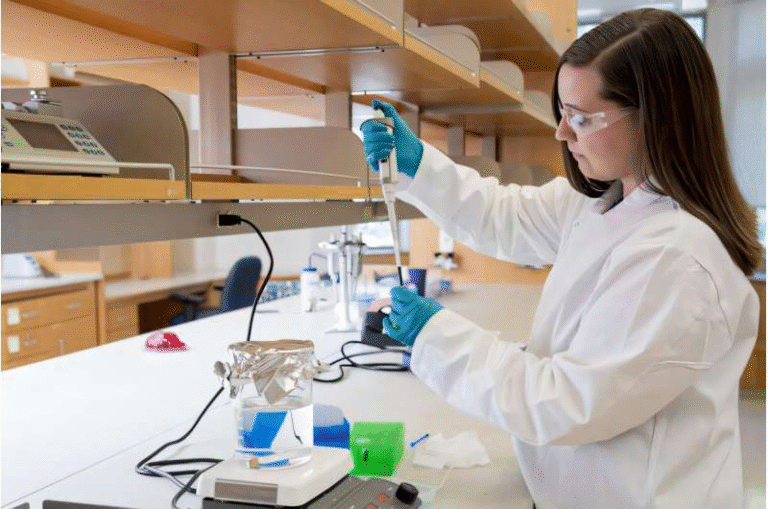How Crowdsourcing and Phone Cameras Are Helping Recover America’s Missing WWII Aircrews

A new effort led by UC Berkeley anthropologist Jun Sunseri is aiming to change how the remains of missing U.S. service members—especially those lost in World War II aircraft crashes—are located and brought home. With roughly 80,000 American service members still unaccounted for and an estimated 38,000 considered recoverable, this project takes a practical, technology-driven approach to improving recovery success.
It combines everyday tools like smartphone cameras with contributions from museum visitors, collectors, veterans, and military history enthusiasts, creating a resource designed to support the teams who physically excavate historic crash sites around the world.
Below is a clear, detail-rich breakdown of everything the project involves, how it works, and why it matters—followed by helpful context about related archaeological and recovery methods.
The Goal of the Project
Sunseri’s initiative, known informally as the Missing American Aircrews Project, seeks to build a comprehensive digital reference library that can be used by archaeologists and DPAA-supported recovery teams working in remote crash locations. These sites often contain scattered wreckage stretching across wide areas. In many cases, aircraft debris has been weathered by eight decades of exposure, buried under soil or vegetation, or located in rugged terrain.
To make recovery more efficient, the project aims to assemble a massive, searchable inventory of 2D images, 3D scans, and video references—all focused on the kinds of aircraft parts, personal gear, and life-support equipment that crash-site teams might encounter.

Credit: UC Berkeley
Why This Is Needed
Those who volunteer or work on recovery excavations rarely have specialized aviation expertise. Many can identify metal fragments, but not necessarily differentiate an aluminum wing piece from a steel cockpit component—a distinction that matters when trying to determine a crew member’s likely location at the moment of impact.
Recovery teams often work under tight timelines. According to Sunseri, missions usually last only a few weeks, and teams may need to pause operations for hazards such as unexploded ordnance. With limited time on the ground, having quick access to highly detailed reference material becomes crucial.
Sunseri brings a unique combination of skills to the challenge:
- A mechanical engineering background
- Experience in automotive crash reconstruction and failure analysis
- Expertise in archaeological surveying using geophysical instruments
His goal is to build a knowledge bridge that makes this material immediately accessible to non-experts in the field.
How the Three-Phase System Works
Phase 1: Crowdsourced Image Collection
This phase invites everyday people to contribute:
- Museum visitors taking high-quality phone photos of aircraft structures, cockpits, uniforms, and equipment
- Collectors photographing WWII gear stored in their homes
- History enthusiasts sharing photos of aviation artifacts
- Even items like aviation shaving kits, patches, and personal effects are welcomed
All of these help create a broad, diverse comparative archive. The goal is to gather hundreds or thousands of images, covering as many aircraft types and components as possible.
Phase 2: Expert Validation by Veterans and Enthusiasts
Military historians, aviation buffs, and veterans help sort, classify, and validate all the crowdsourced material. They organize it according to:
- Aircraft type and airframe
- Specific mission details
- Theater of operation (Europe, Pacific, North Africa, etc.)
- Personal equipment variations
This ensures that the digital archive is not just large, but also accurately structured for quick use in the field.
Phase 3: Field-Ready Digital Packets
After validation, data is assembled into compact, downloadable files that teams can access offline on phones or tablets while working at crash sites. Each packet includes:
- 3D models of aircraft
- Lists of components likely to survive a crash
- Personal gear references (buckles, zippers, life-support devices)
- Mission-specific background records
For divers investigating underwater crash sites, the system would provide submerged wreckage orientation aids, helping them identify components in low-visibility environments.
Real-World Testing and Lab Team Work
Sunseri and his students have already begun applying early versions of this system. The team includes researchers such as Rory Hinkle, Mario Castillo, Juliette Lovell, Jessica Gallup, Evan Agbayani, Milka Grenier, Andy Matessa, and Nathalia Harris. They have:
- Visited local California air museums to photograph components
- Trained volunteers in intake and validation workflows
- Worked alongside citizen scientists contributing additional data
- Participated in on-site crash recovery efforts, including a recent mission in Germany led by Portland State University
Sunseri notes that the entire project is currently powered by what he calls a “scrappy little lab group” with no formal funding, making their progress even more notable.
He has completed the DPAA’s partner-training program and is now submitting the project for approval as a long-term supported collaboration—meaning the agency may eventually deploy this system to recovery teams globally.
How This Helps Solve Complex Crash-Site Challenges
Wreckage Orientation
At a crash site, identifying where the cockpit, wings, fuselage, or tail came to rest helps determine:
- Where crew members were located
- Which direction the aircraft traveled
- How debris scatter patterns formed
Having reference models accelerates orientation, which is essential for locating human remains.
Component Identification
Knowing whether a metal piece is:
- A wing rib,
- A landing gear strut,
- A radio component, or
- A buckle from an oxygen mask,
can immediately narrow down search zones.
Historical Cross-Referencing
By pairing artifacts with mission records, teams can confirm:
- The exact aircraft model
- The crew listed onboard
- The date and location of disappearance
- Possible impact scenarios
This dramatically increases recovery accuracy.
Why Crowdsourcing Is Extremely Effective Here
Crowdsourcing democratizes expertise. Millions of people visit aviation museums each year, and many own old military memorabilia passed down through families. A smartphone camera today produces images detailed enough for scientific study. The combination of widespread access and digital sharing makes the reference system more complete than what any single institution could build alone.
This approach also brings together groups of people who may not normally interact—veterans, aviation fans, archaeologists, engineers, families of missing service members—fostering collaboration around a meaningful mission.
Broader Context: How Crash-Site Archaeology Works
Crash-site archaeology blends:
- Geophysical survey tools like ground-penetrating radar and magnetometers
- Forensic anthropology to analyze bone fragments
- Material science to understand metal deformation
- GIS mapping to plot debris fields
Because aircraft often break apart on impact, the debris field can span hundreds of meters. Archaeologists study the physics of the crash along with historical records to reconstruct what happened.
This makes Sunseri’s digital library especially useful—it extends access to aircraft-specific knowledge that most archaeologists simply don’t have.
Broader Impact on Families and Communities
At its core, this project is about closure. Many American families have waited decades for news about missing relatives. Recovery missions help return remains for burial, reconnect families with long-lost history, and honor the service of those who never came home.
Sunseri has observed that this shared purpose even bridges political and social divides, uniting volunteers around a mission that transcends ideology.
Reference: UC Berkeley





